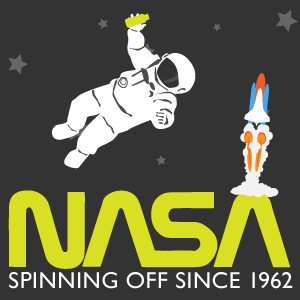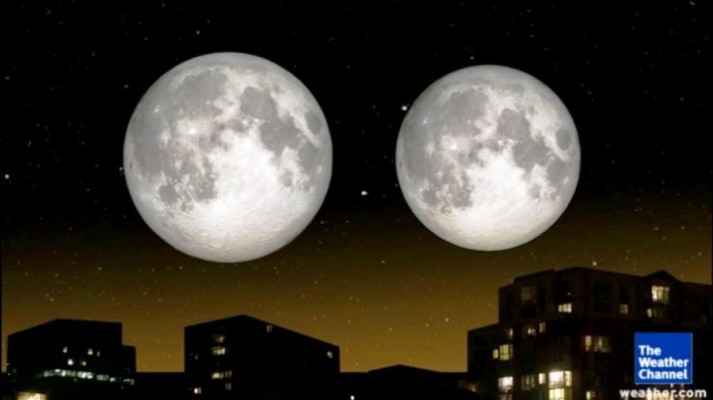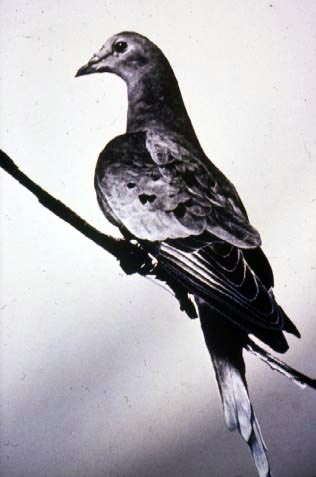 Buhl Planetarium's first telescope seen here on the West Wing of Buhl's
Buhl Planetarium's first telescope seen here on the West Wing of Buhl's
third-floor Astronomical Observatory, a 4-inch terrestrial refractor
telescope, was sent to Pittsburgh by mistake by the Carl Zeiss Opitcal
Works in Jena, Germany. Due to the outbreak of World War II, it
could not be returned and replaced with an astronomical telescope.
(Image Source: Francis G. Graham, Professor Emeritus of Physics,
Kent State University)
By Glenn A. Walsh
Reporting for SpaceWatchtower
This past-week marked the 75th anniversary of the outbreak of World War II, although America did not enter the war until two years later, following Japan's surprise attack on Pearl Harbor, Hawaii. This war greatly affected science and technology, including the science of Astronomy.
RADAR, SONAR, jet aircraft, helicopters, and analog computers were important technologies perfected during the Second World War, which greatly advanced scientific research and discovery after the war. However, the greatest scientific and technological advancement was the successful production and application, by the United States, of the first atomic bombs. Physicist J. Robert Oppenheimer was the Scientific Director of the Los Alamos National Laboratory, that designed the first atomic bombs for the famed Manhattan Project.
But, just before the beginning of the war, Dr. Oppenheimer, along with University of California graduate student Hartland Snyder, published a scientific paper predicting the existence of black holes. Titled, "On Continued Gravitational Contraction," it stated that gravity would squeeze a very heavy star to an extremely small point, once the star's fuel was used up.With the beginning of World War II, Dr. Oppenheimer could not continue this research.
By the time World War II commenced, many European scientists, including Albert Einstein, had left Europe for the United States, where they continued their scientific research.
German astronomer Walter Baade had moved to America in 1931 and was working at the Mt.Wilson Observatory near Los Angeles. He was offered the directorship of the Hamburg, Germany Observatory a few years later. Still a loyal German, he considered the offer but decided to stay at Mt. Wilson where he had better facilities and a milder climate. Although the United States classified him as an "enemy alien," he was allowed to continue his research.With Los Angeles black-outs due to the war, he made important discoveries regarding the size of the universe and the nature of stars.
Another German astronomer, Rudolph Minkowski, a colleague of Walter Baade, came to America under threat of being sent to a German concentration camp. After becoming an American citizen, he assisted the war effort at the California Institute of Technology. After the war, he made discoveries regarding galaxies and dying stars, as well as heading the National Geographic Society -- Palomar Observatory Sky Survey.
Except for technological research for military applications, most scientific research in Europe ceased during the war. Some astronomical observatories in Europe closed or were used for meteorological observations or celestial navigation training for military aircraft pilots.
Some research and production facilities, including astronomical observatories, were destroyed during the war. The Pulkovo Observatory, near St. Petersburg, Russia, was completely destroyed after fierce German air raids and artillery bombardment. Several astronomical instruments, and the 30-inch objective lens from the main telescope, were saved by the staff, as well as a large portion of the observatory's library. The Pulkovo Observatory was rebuilt and expanded in 1954.
The Carl Zeiss Optical Works in Jena, Germany, where the first planetarium projectors were built, was heavily damaged by Allied bombing during the war. Once the war had begun, the factory had been used to manufacture bombsights for German military aircraft.
After World War II, when the Jena factory became part of the Democratic Republic of Germany (East Germany), a second Zeiss Company was established in Oberkochen in the Federal Republic of Germany (West Germany). In 1991, a year after the German reunification, the two Zeiss companies were effectively reunited, with the microscopy and planetarium divisions moving back to Jena.
Nearly 75 years ago, the fifth Zeiss II Planetarium Projector in America was installed in Pittsburgh's original Buhl Planetarium and Institute of Popular Science. Dedication of Buhl Planetarium came less than two months after the start of World War II, on 1939 October 24, when the Buhl Foundation gifted and legally conveyed the Buhl Planetarium building and all astronomical instruments and scientific exhibits to the City of Pittsburgh. However, the planetarium projector was not the only instrument Buhl Planetarium purchased from the Carl Zeiss Optical Works.
Along with the Zeiss II Planetarium Projector, Buhl Planetarium had ordered a 4-inch Zeiss Refractor Telescope. A much larger telescope, a 10-inch refractor from the Gaertner Scientific Company of Chicago installed in a rather unique sidereal-coelostat (i.e. siderostat) arrangement, would not be completed for another two years. Hence, for the first two years of Buhl Planetarium's operation, this Zeiss refractor would be Buhl's main telescope.
However, when the Zeiss telescope arrived in Pittsburgh, Buhl Planetarium officials were disappointed. The Carl Zeiss Optical Works had sent the wrong telescope. The Zeiss telescope that arrived in Pittsburgh was a
terrestrial refractor, providing images that were right-side-up, similar to a nautical spy glass. However, Buhl had ordered an
astronomical refractor, which provides an upside-down image of a celestial object.
Viewing astronomical objects right-side-up is not really necessary for scientific research. And, an astronomical image viewed in a telescope right-side-up is more degraded than an up-side-down image, because additional optical glass is needed to make an image right-side-up. Light is lost every time you add more optical glass, and scientists need to study as much light as possible from an astronomical object, to better understand the object.
Ideally, Buhl Planetarium would have returned the Zeiss telescope to Germany and waited for the correct replacement to be sent. However, with the outbreak of World War II this was impossible. So, the Buhl Planetarium staff had to learn to make-do with a terrestrial refractor. This Zeiss terrestrial refractor telescope, with a very unique history, continues to be used today for public programs of the Henry Buhl, Jr. Planetarium and Observatory at The Carnegie Science Center.
"The People's Observatory" with the 10-inch Siderostat-type Refractor Telescope, on Buhl Planetarium's third floor, was dedicated on the evening of 1941 November 19. Famous Astronomer Harlow Shapley, who then was Director of the Harvard College Observatory, gave the keynote address at the dedication. First Light through the "Siderostat" was the ringed-planet Saturn.
On the same evening as the Siderostat dedication, Buhl Planetarium introduced a new planetarium show and opened a new temporary exhibit. The planetarium show was titled, "Bombers by Starlight," which showed how military aviators could use Celestial Navigation to find their way at night. During World War II, Buhl Planetarium was used to train military aviators in the science of Celestial Navigation.
The temporary exhibit which opened that evening, in the Octagon Gallery (located directly below Buhl Planetarium's "Theater of the Stars"), was titled, "Can America Be Bombed?" This exhibit opened two and one-half weeks before the Japanese bombed Pearl Harbor, Hawaii!
In October of 1944, Buhl Planetarium's five exhibit galleries were dedicated to a U.S. Army Air Force Air Power Show, which showed the public hundreds of items of AAF materiel, including a small military airplane, as well as captured enemy equipment. This exhibition was an expanded version of a similar exhibition held earlier at Rockefeller Center in New York City.
The AAF Air Power Show was jointly sponsored by the War Finance Committee and Buhl Planetarium. Of course, the main purpose of the exhibition was to sell War Bonds. Admission to the Air Power Show cost one 25-cent War Stamp for adults and a 10-cent War Stamp for children.
StarDate Radio Program produced by the University of Texas McDonald Observatory --- Radio program scripts on Astronomy and World War II ---
Program 1 Link >>>
http://stardate.org/radio/program/paper-black-holes
Program 2 Link >>>
http://stardate.org/radio/program/world-war-ii
Program 3 Link >>>
http://stardate.org/radio/program/world-war-ii-part-ii
Program 4 Link >>>
http://stardate.org/radio/program/world-war-ii-part-iii
Sources: StarDate Radio Program, written by Damond Benningfield and produced by the University of Texas McDonald Observatory; Glenn A. Walsh, Reporting for SpaceWatchtower, a project of Friends of the Zeiss.
Want to receive
SpaceWatchtower blog posts in your inbox ?
Send request to <
spacewatchtower@planetarium.cc
>..
gaw
Glenn A. Walsh, Project Director,
Friends of the Zeiss <
http://buhlplanetarium.tripod.com/fotz/
>
Electronic Mail - <
gawalsh@planetarium.cc
>
SpaceWatchtower Blog: <
http://spacewatchtower.blogspot.com/
>
Also see: South Hills Backyard Astronomers Blog: <
http://shbastronomers.blogspot.com/ >
Barnestormin: Writing, Essays, Pgh. News, & More: <
http://www.barnestormin.blogspot.com/ >
About the SpaceWatchtower Editor / Author: <
http://buhlplanetarium2.tripod.com/weblog/spacewatchtower/gaw/ >
SPACE & SCIENCE NEWS, ASTRONOMICAL CALENDAR:
<
http://buhlplanetarium.tripod.com/#news
>
Twitter: <
https://twitter.com/spacewatchtower
>
Facebook: <
http://www.facebook.com/pages/SpaceWatchtower/238017839577841?sk=wall
>
Author of History Web Sites on the Internet --
* Buhl Planetarium,
Pittsburgh:
<
http://www.planetarium.cc >
*
Adler Planetarium, Chicago:
<
http://adlerplanetarium.tripod.com
>
* Astronomer, Educator, Optician John A. Brashear:
<
http://johnbrashear.tripod.com >
*
Andrew Carnegie & Carnegie Libraries:
<
http://www.andrewcarnegie.cc >
* Civil War Museum of Andrew Carnegie Free Library:
<
http://garespypost.tripod.com >
*
Duquesne Incline
cable-car railway, Pittsburgh:
<
http://inclinedplane.tripod.com
>
* Public Transit:
<
http://andrewcarnegie2.tripod.com/transit
>









 The Weather Channel
The Weather Channel


